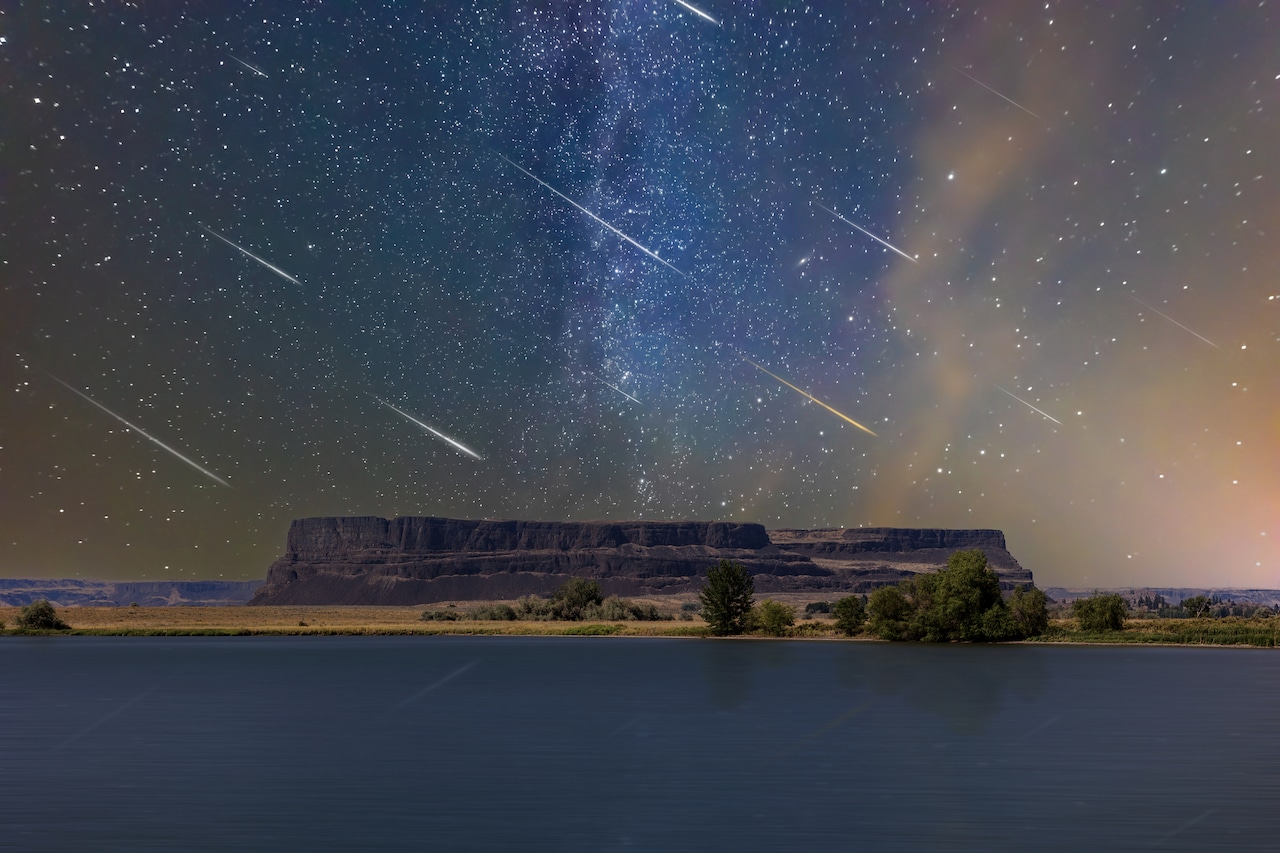Fall’s fastest-moving meteor shower, the Orionids, are set to peak this week. And they’re putting on their biggest show while we’ve got two comets appearing in the night sky.
The bonus for this week’s peak? We’re in a “new moon” phase, which essentially means the moon will be invisible, leaving us with very dark skies. Now let’s keep our fingers crossed for no clouds.
The Orionids will peak in the early morning hours of Tuesday, Oct. 21. So you can look for them tonight and into Tuesday morning. The meteor shower itself will keep going through Nov. 22, but the number of meteors will be waning the deeper we get into next month.
During this peak week, you could see up to 20 meteors per hour streaking across the sky. The best window is roughly from 11 p.m. to 2 a.m.
The Orionids are speedy. They can look like zips of bright, white light. Some leave gas “trails” that stay in view after they’ve gone. While there could be some bright fireballs, this shower isn’t known for spitting out a lot of those.
You can see them anywhere across the sky, but most seem to radiate from the constellation known as Orion the Hunter
“This meteor shower happens when Earth travels through the debris trailing behind Halley’s Comet and it burns up in our atmosphere,” NASA staff said in this month’s skywatching blog.
“With a moonless sky, you’re much more likely to catch a fireball careening through the night. So find a dark location after the sun has set, look to the southeast sky (if you’re in the northern hemisphere) and enjoy!”
A Comet Double Take
As for the comets, those can best be seen about 90 minutes after sunset Monday night, according to information from LiveScience.
If you’re in a dark area, you can try looking for them with just your eyes. But you will probably need a pair of binoculars.
“Comet Lemmon, which was discovered in January by the Mt. Lemmon SkyCenter observatory in Arizona’s Santa Catalina Mountains, will be low in the northwest between the end of the handle of the Big Dipper and the bright star Arcturus. Comet SWAN, which was first spotted in September by NASA‘s orbiting Solar Dynamics Observatory, will be low in the south, just below the bright star Altai,” LiveScience said.
You can read more about Comet SWAN here.
If you purchase a product or register for an account through a link on our site, we may receive compensation. By using this site, you consent to our User Agreement and agree that your clicks, interactions, and personal information may be collected, recorded, and/or stored by us and social media and other third-party partners in accordance with our Privacy Policy.
First Appeared on
Source link












